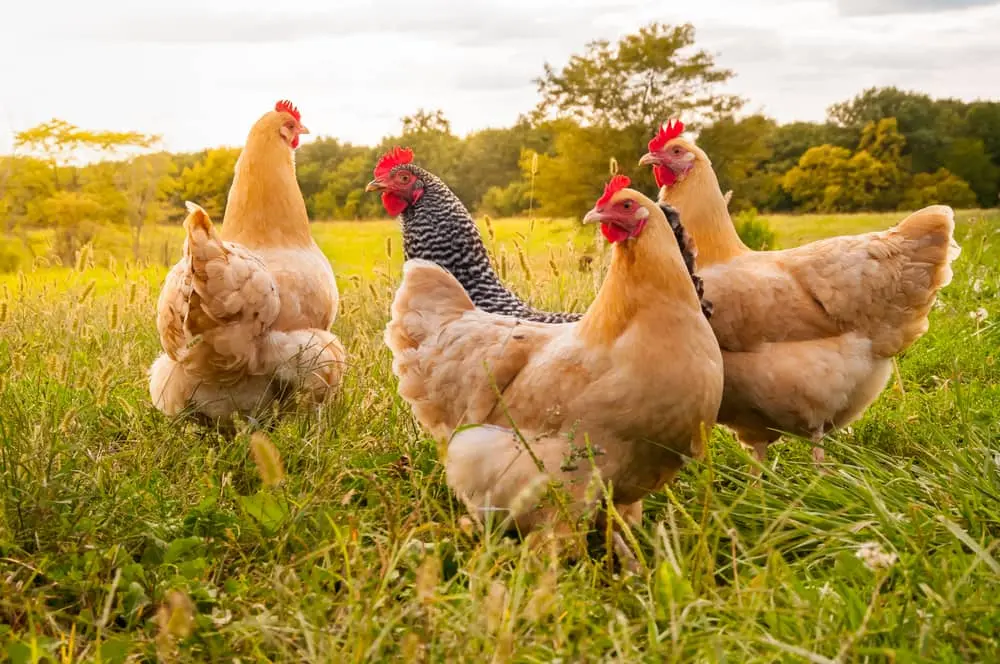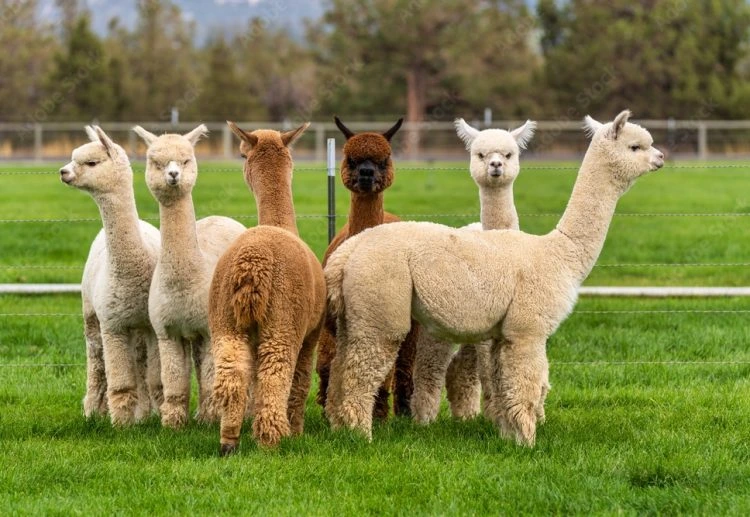Table of Contents
Small-scale farming has become an increasingly popular endeavor in both the United States and Europe, driven by a renewed focus on sustainability, local food systems, and economic independence. For farmers operating on limited land, selecting the right livestock is critical to maximizing profits while managing resources effectively.
This article explores the most profitable farm animals for small farms, offering insights into their unique advantages, revenue opportunities, and practical considerations. Whether you’re a new farmer or an experienced grower looking to diversify, understanding the profitability potential of these animals can help you make informed decisions that align with your farm’s goals and market demands.
Factors Influencing Livestock Profitability
Before diving into the top choices, it’s crucial to understand the key factors that determine profitability:
- Market Demand: The success of your livestock depends on demand for their products locally or regionally.
- Initial Investment: Start-up costs for infrastructure, breeding stock, and necessary equipment.
- Maintenance Costs: Feeding, healthcare, and housing expenses can impact overall profit margins.
- Reproduction Rates: High fertility can translate into faster returns.
- Product Diversification: Livestock offering multiple revenue streams (e.g., meat, milk, wool) are often more profitable.
Top 10 Most Profitable Farm Animals for Small Farms
1. Chickens
Chickens are an excellent choice for small farms due to their versatility and low maintenance. Layers can produce a steady supply of eggs, while broilers provide meat, catering to diverse markets. Specialty markets for organic, free-range, or pasture-raised poultry offer premium pricing opportunities.
Egg Production: A single hen can lay 250–300 eggs annually, providing a consistent income stream. Egg sales often have low entry barriers, appealing to local consumers and small markets.
Meat Production: Broilers mature in just 6–8 weeks, allowing multiple harvests per year.
Additional Benefits: Chicken manure can be used as a rich fertilizer or sold to gardeners, adding value beyond eggs and meat.

2. Rabbits
Rabbits are a hidden gem for small-scale farming. They reproduce quickly, with a single doe capable of producing 6–8 litters annually. Each litter averages 6–8 kits, ensuring a steady supply of meat or breeding stock.
Meat Production: Rabbit meat is lean, high in protein, and increasingly sought after in gourmet and health-conscious markets.
Fur and Pelts: Breeds like the Rex and Angora are valued for their soft, luxurious fur, which can be used for clothing or crafts.
Manure: Rabbit droppings are highly prized as organic fertilizer, offering an additional revenue stream.

3. Goats
Goats are a multifunctional livestock choice with high profitability in meat, dairy, and fiber markets.
Milk and Cheese: Goat milk is a popular alternative to cow’s milk, especially for lactose-intolerant consumers. Cheese production, particularly chèvre, can significantly boost earnings.
Meat: Goat meat is among the most widely consumed meats globally and is gaining popularity in the U.S. and Europe due to demand from ethnic and gourmet markets.
Fiber: Breeds like Angora (for mohair) and Cashmere goats produce high-value fibers used in luxury textiles.
Added Benefits: Goats can be rented out for vegetation control, creating a unique income source.

4. Bees
Beekeeping provides a lucrative opportunity with minimal land requirements. A single hive can produce 50–100 pounds of honey annually, alongside beeswax, propolis, and royal jelly.
Hive Rentals: Renting hives for crop pollination is a growing business as demand for pollination services increases.
Products: Local honey often fetches premium prices, especially when marketed as raw or organic. Beeswax is in demand for candles, cosmetics, and polishes.
Pollination: Beyond direct sales, bees improve crop yields on the farm, indirectly boosting profitability.

5. Pigs
Pigs are among the most efficient converters of feed into meat, making them an excellent choice for farms with moderate land availability.
Meat Production: Pork remains a staple protein worldwide, with heritage breeds offering niche marketing opportunities.
Value-Added Products: Sausages, smoked meats, and cured products like bacon can significantly increase earnings.
Manure: Pig manure is a valuable fertilizer but requires proper management to avoid environmental issues.

6. Sheep
Sheep are versatile livestock suited to meat, wool, and dairy production.
Meat: Lamb and mutton are in demand worldwide, especially in ethnic and gourmet markets.
Wool: While the wool market can be volatile, high-quality fleece commands a premium price. Breeds like Merino are particularly valuable.
Milk: Sheep milk is used for specialty cheeses like feta, ricotta, and pecorino, which fetch high prices in niche markets.

7. Ducks
Ducks are often overlooked but provide unique advantages for small farmers.
Eggs: Duck eggs are larger and richer than chicken eggs, appealing to bakers and gourmet consumers.
Meat: Duck meat is prized for its flavor, especially in Asian and French cuisine.
Pest Control: Ducks naturally reduce insect populations, benefiting crop production.

8. Cattle
Although cattle require significant land and resources, their multiple revenue streams make them highly profitable.
Beef: Grass-fed or organic beef can command premium prices.
Dairy: Milk, butter, and cheese production offer steady income.
Other Products: Manure can be sold or used on the farm, while leather is a byproduct of beef production.

9. Quail
Quail are ideal for farmers with limited space.
Egg Production: Quail eggs are small but highly nutritious, with strong demand in gourmet markets.
Meat: Quail meat is tender and flavorful, catering to niche culinary markets.
Low Maintenance: These birds are easy to care for and breed prolifically, ensuring a steady supply.

10. Alpacas
Alpacas are prized for their luxurious fleece, used in high-end garments and textiles.
Fleece: Each alpaca produces 5–10 pounds of fleece annually, with top-quality fiber fetching premium prices.
Breeding Stock: Selling alpacas as breeding animals can be highly lucrative.
Manure: Alpaca manure is excellent for gardening, adding a supplementary income source

Case Studies
Polyface Farm (Virginia, USA)
Joel Salatin’s farm thrives on rotational grazing and sustainable integration of chickens, pigs, and cattle. By combining low-cost methods with direct sales, Polyface Farm ensures steady profitability while improving soil health and producing premium products.
Briddlesford Lodge Farm (UK)
This dairy farm excels by producing high-quality milk and cheese. Through value-added processing and community engagement, they build strong local demand and sell at premium prices.
Slovenian Bee Farm
Specializing in honey, beeswax, and pollination services, this small farm capitalizes on local and global demand while enhancing profitability with agri-tourism initiatives.
French Goat Cheese Farm
In Northern France, a goat farm successfully meets niche dairy demand by producing artisanal cheese. Their focus on organic certification and sustainable practices supports premium pricing.
Diversified Midwest Farm (USA)
A small homestead combines hogs and cattle to maximize soil health and meat production. Direct sales to consumers ensure profitability while emphasizing ethical, high-quality farming
Slideshow Gallery
Tips for Maximizing Profitability
- Diversification: Combine multiple species to balance risks and expand income streams.
- Value-Added Products: Process raw outputs into high-value goods like cheese, soap, or yarn.
- Direct Marketing: Engage with consumers directly via farmers' markets or online platforms.
- Sustainability: Eco-friendly methods reduce costs and attract environmentally conscious buyers.
Conclusion
Choosing the most profitable farm animals for a small-scale operation requires careful evaluation of your resources, goals, and local market opportunities. Each livestock option comes with its unique benefits and challenges, from the rapid growth of quail and rabbits to the multifunctional utility of goats and cattle. The key to success lies in leveraging multiple income streams, such as selling value-added products, practicing sustainable farming methods, and engaging directly with consumers.
By implementing the insights from this guide, small farmers can optimize their operations and increase their chances of long-term profitability. Whether you aim to produce specialty cheeses, premium fibers, or organic eggs, the right livestock can turn your small farm into a thriving enterprise. Share your journey and experiences in the comments to inspire others in the farming community!
What are your experiences with profitable livestock? Share your insights in the comments!
Frequently Asked Questions (FAQs)
1. What are the best ways to market livestock products directly to consumers?
Direct-to-consumer marketing can be highly profitable for small farms. Farmers' markets, community-supported agriculture (CSA) programs, and online platforms are excellent channels. Social media and farm websites allow you to connect with local buyers and showcase your operations. Building relationships with local restaurants and grocery stores can also open new markets for specialty products like organic eggs, grass-fed meat, or artisan cheese.
2. How do I manage predator control on a small farm?
Predators like foxes, hawks, and raccoons can threaten livestock, especially chickens, rabbits, and ducks. Secure housing, such as coops with reinforced wire and lockable doors, is crucial. Livestock guardian animals like dogs or llamas can provide additional protection. Electric fencing or motion-activated lights can deter nocturnal predators effectively.
3. What is the average time it takes for livestock to become profitable?
The timeline varies by species. Chickens and quail can start producing marketable eggs within a few months, while goats and cattle may take up to two years before milk or meat production becomes profitable. Factors like breeding cycles, feed costs, and market readiness also influence profitability timelines.
4. Are there grants or financial assistance available for small-scale livestock farmers?
Yes, many governments and organizations offer grants and low-interest loans to small farmers. For example, the USDA provides financial assistance through its Farm Service Agency (FSA). In Europe, programs like the EU Common Agricultural Policy (CAP) support small-scale farming. Check local agricultural departments for funding opportunities tailored to sustainable and organic farming.
5. What are some niche markets for small farm livestock?
Niche markets include organic eggs and meat, rare poultry breeds, specialty dairy products like goat cheese, and unique fibers such as alpaca fleece. Other options include value-added products like honey-infused goods, charcuterie, or handmade wool garments. Research local demand and consider attending niche food festivals or fairs to connect with potential buyers.
6. How do I ensure ethical and sustainable practices while maintaining profitability?
Sustainability can align with profitability when approached strategically. Rotational grazing, manure composting, and renewable energy sources like solar panels reduce costs and environmental impact. Ethical practices, such as pasture-raised livestock or organic certification, often command premium prices in conscientious markets.
7. Can small farms participate in agri-tourism?
Absolutely! Offering activities like farm tours, workshops on beekeeping or cheese-making, or seasonal events like pumpkin picking can diversify income streams. Agri-tourism can also help build community connections and increase brand awareness for your farm products.
8. What are the health considerations when raising livestock on a small farm?
Maintaining the health of your livestock requires proper vaccinations, clean housing, and balanced diets. Routine vet checks and biosecurity measures prevent the spread of diseases. Knowledge of local regulations regarding livestock health and welfare is essential to ensure compliance and animal well-being.
9. How can I deal with overproduction or seasonal surpluses?
For excess production, consider value-added processing. For example, surplus milk can be used for cheese or yogurt, while eggs can be pickled or turned into specialty baked goods. Partnering with food banks or co-ops can also ensure no product goes to waste while building goodwill in your community.
10. What livestock options are best for extreme climates?
Goats and sheep are highly adaptable to various climates and can thrive in arid or rugged terrains. Chickens and rabbits require insulated housing in colder regions. Beekeeping can work well in diverse environments if hives are placed strategically to avoid weather extremes. Always choose breeds known for resilience in your specific region.













